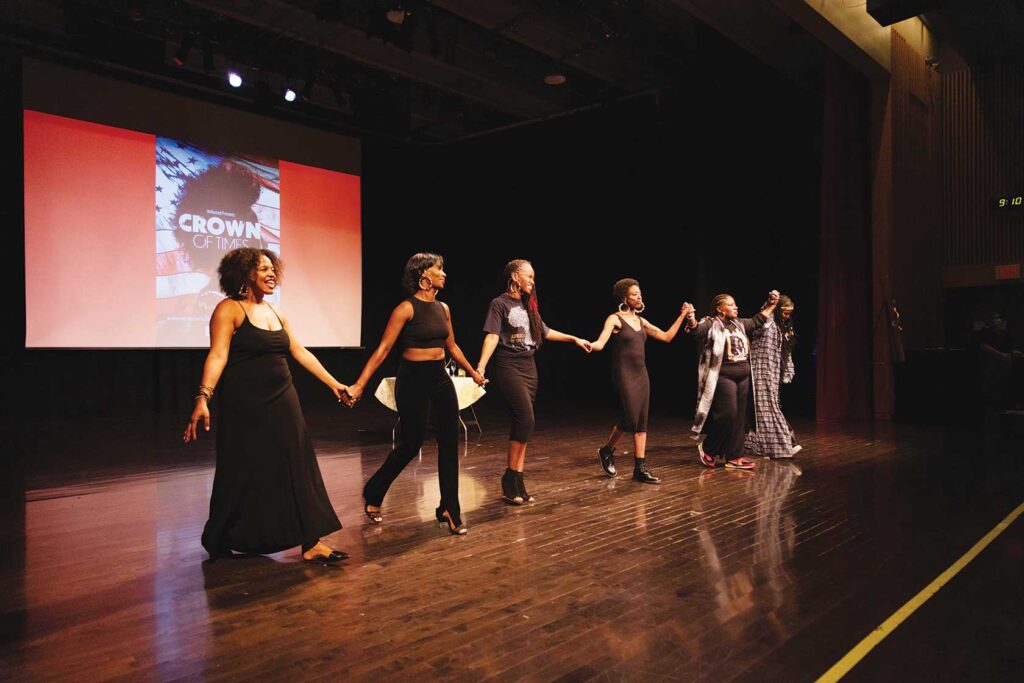‘Crown of Times’ a play about Black hair returns for one night only

Michele Avery and Yvette Modestin share a passion for artistic expression. They have known each other for over 20 years and have partnered on various creative projects. So, coming together to produce a play about the intricacies of Black hair was a natural next step.
Neither Avery nor Modestin, who also uses her Yoruba name Lepolata Apoukissi, has a background in playwriting, but they recognized the necessity of telling this story. In Modestin’s line of work as an artist and activist focusing on reparative justice, she has witnessed Black adults and children get emotional while speaking about their hair.

Michele Avery and Yvette Modestin (Lepolata Apoukissi) said they wanted Black women to see themselves in the characters in “Crown of Times.” COURTESY PHOTO
Avery and Modestin also have both worn their hair natural for over two decades and have become well acquainted with the implications of doing so.
“As Black people, we have to deal with the microaggressions that come against us for Black hair,” said Avery, a writer and producer. “Often Black hair comes with judgment. Too often Black hair comes with repercussions in the workforce. And too often Black hair, at times, comes with punishment.”
When the pair received a Live Arts Boston grant, they decided to push the bounds of what they thought they could do creatively. From their partnership came “Crown of Times,” a play borne of their “love for all things Black” and a desire to uplift Black stories, Modestin said. The play had an initial sold-out run at the Museum of Science in the summer of 2023 and returns to the museum on Feb. 23 for an encore.
“Crown of Times” spans five decades, each with a corresponding monologue wherein characters discuss the repercussions of having Black hair. The play covers the respectability politics of the 1950s, the Black is Beautiful movement of the 1970s and the role Black hair played in the sexual liberation of the 1990s. Avery said the play incorporates raw dialogue and is “in solidarity with the Crown Act,” a law in 23 states that prohibits race-based hair discrimination.
“We’re not looking for people to be sitting in their chairs and feel comfortable,” she said. “We’re looking to make you uncomfortable.”
Modestin and Avery also create work about and for Black men, but with “Crown of Times,” they wanted Black women in the audience to see themselves, especially those who struggle with self-worth, Avery said.
During its summer run, “Crown of Times” attracted a diverse audience, which Modestin said she was pleased to see. The play gave audience members who weren’t Black or African American the opportunity to “know that this is an issue for us” and “see the intensity and the depth” of the obstacles Black women face. But the creators also wanted them to celebrate alongside Black women, to “know our truth, and to know our love, and to know our joy,” Modestin said.
She added that “Crown of Times” also serves a broader purpose.
“We’re now living in a climate where books that we read that have shaped us are being banned,” she said. “And then we have to find other forms for those young people that will not be reading those books to still have some historical knowledge that hair has a history, hair has a place in the civil rights movement, hair has a place in the Black Arts Movement … It tells the American story. It tells the African American story.”






